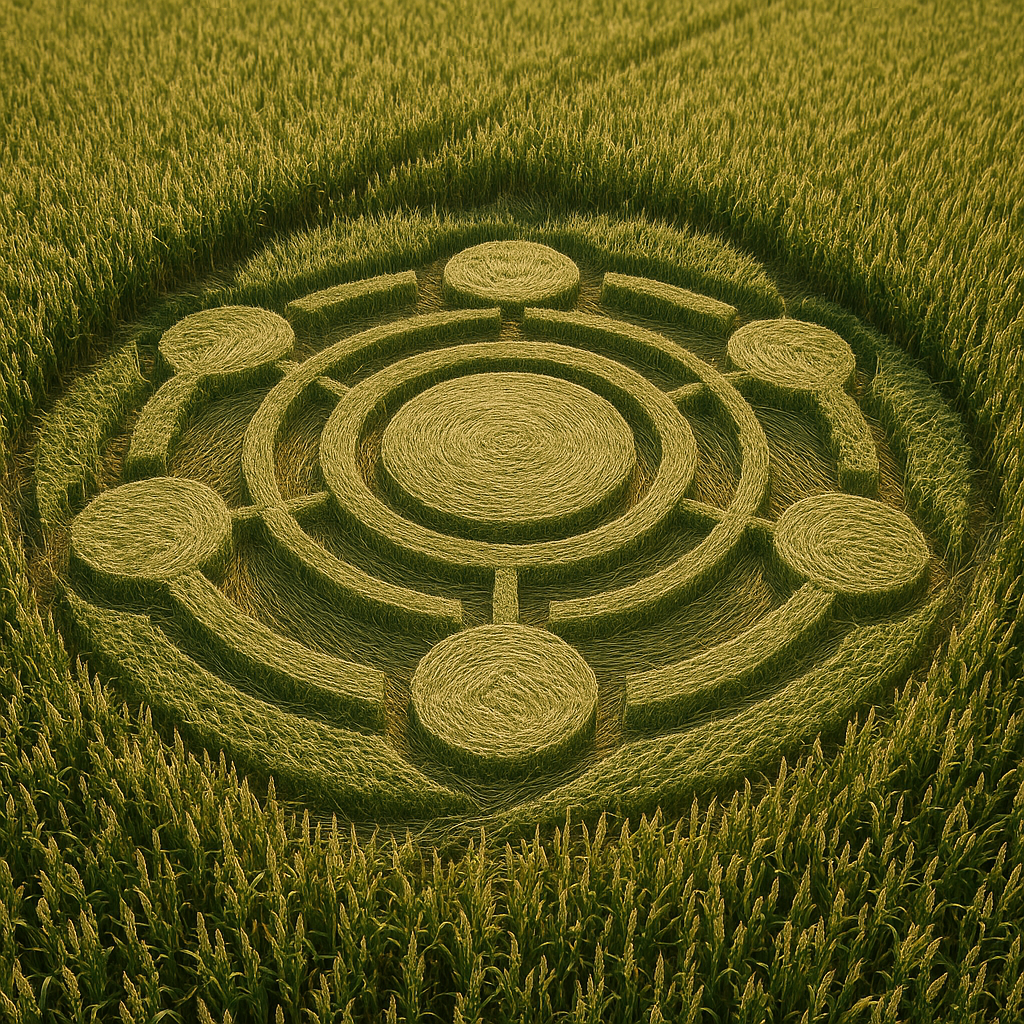
Conventional wisdom holds that consciousness emerges from complex neural structures within individual organisms. Yet, groundbreaking research into plant-fungal networks invites us to reconsider what forms of awareness or intelligence might exist beyond traditional boundaries. The “Conscious Field Hypothesis” proposes that large-scale agricultural fields, through intricate plant-fungal interactions, might function as distributed intelligences, potentially expressing themselves in surprising ways, such as crop circles.
While it may sound extraordinary, dismissing this possibility without investigation could be shortsighted. If there is even a small chance that our planet—or aspects of it—possess a form of awareness, shouldn’t we explore it?
Foundations in Plant-Fungal Communication
Mycorrhizal networks, commonly known as the “Wood Wide Web,” interconnect plant roots through fungal threads, enabling the transfer of nutrients and signaling molecules. These networks allow plants to collectively respond to environmental threats, such as pests or drought, by distributing resources and activating defensive measures.
Recent scientific discoveries reveal that fungi transmit electrical impulses through their mycelium, closely resembling the action potentials seen in neural activity. For example, the oyster fungus (Pleurotus djamor) exhibits electrical spikes indicative of information processing. These findings suggest fungal networks may engage in communication and coordination at a level previously underestimated.
Reevaluating Crop Circles
Traditionally, crop circles have been explained as human creations or unexplained natural phenomena. Yet, certain features challenge these assumptions. Often, plants within crop circles are uniquely altered: stalks are bent without breaking, nodes elongated, and growth patterns changed. Additionally, reports of electromagnetic anomalies in these locations—including disrupted electronic devices—further complicate conventional explanations.
Could it be that crop circles represent a kind of expression from the fields themselves—a physical manifestation of communication attempts by this plant-fungal system?
A Framework for Investigation
To seriously explore the Conscious Field Hypothesis, practical, scientific experiments should be considered:
- Structured Inputs: Intentionally introduce geometric patterns into fields through markers or soil compression, observing for any subsequent changes in plant growth or fungal activity.
- Signal Matching: Apply consistent rhythmic stimuli, such as light patterns, sound frequencies, or magnetic fields, and monitor whether plants and fungi respond with altered growth or formation patterns.
- Mycelium Sampling: Collect samples of fungal networks from within crop circles and compare them to samples from unaffected areas. Investigate potential differences in electrical activity, chemical signaling, or microbial diversity.
- Electromagnetic Monitoring: Utilize instruments like magnetometers and spectrum analyzers to detect unusual electromagnetic activity before, during, and after crop circle formation.
These straightforward, affordable experiments could reveal if these phenomena are random or biologically coordinated, opening doors to understanding ecological intelligence in entirely new ways.
Conclusion: Embracing Open Possibilities
Though speculative, the Conscious Field Hypothesis urges us to broaden our perceptions of intelligence and communication in nature. Scientific history repeatedly shows that dismissing possibilities prematurely limits discovery. Just because plant-fungal networks don’t fit traditional definitions of consciousness doesn’t mean they aren’t capable of some form of awareness or intelligent expression.
This hypothesis deserves attention and curiosity, not quick dismissal. If there is a possibility that our Earth communicates, that our fields—our very soil—may harbor an awareness we’ve never recognized, isn’t it worth the effort to listen and learn?
Imagine if Mother Earth is indeed conscious, in her own unique and profound way. Wouldn’t it be extraordinary if we could find a way to speak with her?


